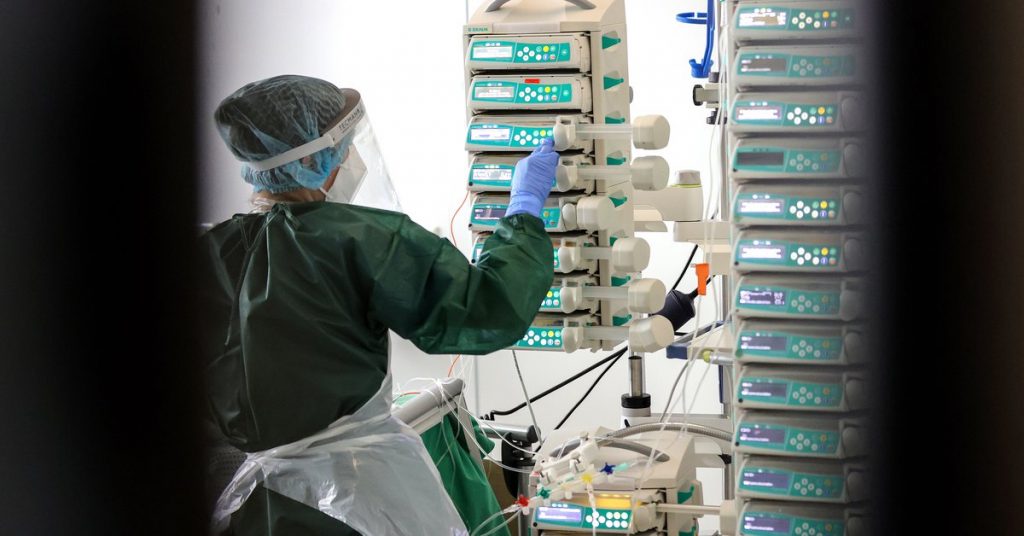The epidemic does not give a respite in Germany, and the weekly number of new coronavirus cases has crossed 100 for the first time since May.

:quality(85)/cloudfront-us-east-1.images.arcpublishing.com/infobae/2WZ5S3QC7NA7DN3G7P3PQE6RCQ.jpg 420w)
Germany’s seven-day cumulative infection rate has reached 100 new coronavirus infections per 100,000 population for the first time since mid-May., according to data from the Robert Koch Institute (RKI) of Virology updated last morning.
For a week and a half there was a file clear uptrend And only between Tuesday and Friday, the infection rate increased from 75,1 a 95,1.
The last time the injury exceeded 100 was May 13, With 104 new cases per 100,000 residents, but the next day it fell to 97.
The numbers are especially high in the federal states Thuringia, with the occurrence of 206.3And Bavaria (163.7), Saxony (159) and Baden-Württemberg (127.9), while Berlin (115.8%)It also crosses the threshold of 100 new cases per 100,000 residents.
:quality(85)/cloudfront-us-east-1.images.arcpublishing.com/infobae/4UAHNLM4K6UFHIFBEV5DWQIL2Q.jpg 420w)
The RKI had already warned on Thursday in its weekly report of a Accelerated increase in injuries in the face of autumn and winter.
What is more, “The cases this year are significantly higher than in the same period last year.” And “The percentage of positives on PCR tests performed in laboratories continues to increase.”From 6.6% in the week of October 4 to 8.3% in the following week, he said.
The incidence of new infections has long been the decisive indicator regarding measures to contain the coronavirus epidemic, although the vaccination campaign has progressed, other factors are now of greater weight, such as Occupying hospital with COVID patients.
:quality(85)/cloudfront-us-east-1.images.arcpublishing.com/infobae/BIMH4OWZ2JARXG26PQGVF4LK6I.jpg 420w)
And so, they reported on Friday 725 hospitalizations due to COVID-19 and a seven-day cumulative admission rate of 2.68 per 100,000 population, while the number of patients with COVID-19 in intensive care units remains stable 1.541 – 59 more in one day, which corresponds to an occupancy of 6.9% of the beds available in intensive care units.
Health authorities reported 15,145 new infections within 24 hours and 86 deaths from or due to COVID-19, while there are active cases in Germany at about 157.400.0000.
until friday, 69.1% of the population in Germany have been vaccinated, 66.2% have been vaccinated with a full diet.
:quality(85)/cloudfront-us-east-1.images.arcpublishing.com/infobae/E2YY6J7HNXE4FHE672B4LCGSCI.jpg 420w)
Despite the continuous increase in cases in recent weeks, German authorities are considering lifting the national emergency due to the epidemic at the end of November, although appropriate measures will be maintained at the regional level.
However, it is an opinion expressed by the Acting Minister of Health in the Government, Jens Span, which – which Not shared by representatives of other parties in GermanyThe Social Democrats, Greens and Liberals are currently negotiating a coalition government.
The Federal Parliament (Bundestag) has approved the implementation of a state of emergency at the national level in March 2020 She maintained this position without interruption for 19 months.
:quality(85)/cloudfront-us-east-1.images.arcpublishing.com/infobae/CWDL6NK6VHRWHQDPJROM4QTTWA.jpg 420w)
This allowed the Ministry of Health to coordinate a series of hygiene and social distancing measures on a national scale, according to RKI standards, although their implementation was the responsibility of the federal states.
The Bundestag agreed in late August to extend this status for another three months.
(With information from EFE)
Read on:

“Travel enthusiast. Alcohol lover. Friendly entrepreneur. Coffeeaholic. Award-winning writer.”




